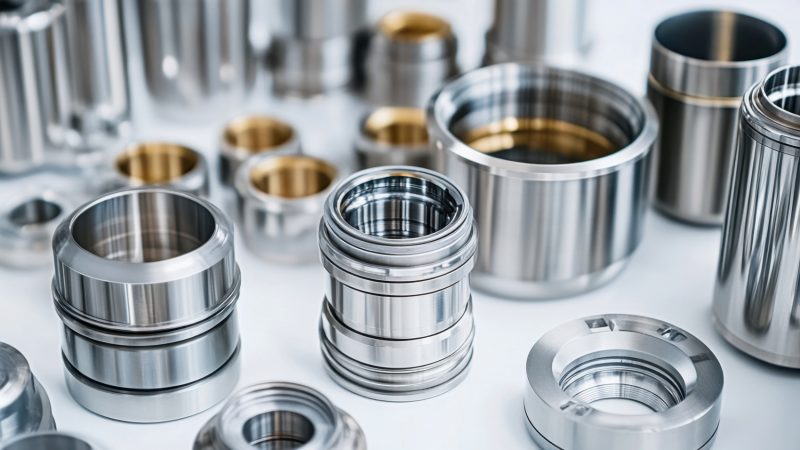Key Steam Turbine Components and Their Functions
Steam turbines have been at the core of power generation for over a century, turning steam energy into electricity that powers industries and homes. However, what truly makes these machines so efficient and reliable lies in their finely engineered components.
Each steam turbine component serves a specific function, from harnessing the energy of high-pressure steam to maintaining the smooth operation of the steam turbine itself. Without these critical parts, this power generator would not be able to deliver the consistent power generation that industries rely on today.
Introduction to Steam Turbines: A Crucial Power Generation Tool
Steam turbines have become the lifelines of various industries. These high-efficiency machines convert thermal energy from steam into mechanical energy, driving generators to produce electricity. Their ability to seamlessly integrate into thermal renewable energy systems like geothermal, waste-to-energy and biomass positions them as crucial players in the ongoing energy transition.
Today’s steam turbines, especially those customized for specific industrial needs, are designed for high efficiency and long-term sustainability. This is achieved through technological innovations and the use of advanced materials.
Now, let’s examine some of the main steam turbine components and how each plays a key role in the overall performance.
Rotor
The rotor is often referred to as one of the most crucial steam turbine components. It is the rotating component that converts the thermal energy from steam into mechanical energy. Made from high-strength alloy steel, the rotor is dynamically balanced to operate at high speeds, ensuring optimal efficiency. Rotors are crucial for mechanical drives and combined heat and power applications, allowing industries to maximize output with minimal energy loss.
Blades
Blades are the components of a steam turbine that come into direct contact with steam to extract energy. There are two main types of blades: moving and fixed blades. Moving blades capture steam energy, causing them to rotate the rotor, while fixed blades guide the steam towards the moving blades. The shape and design of the blades significantly affect the steam turbine’s efficiency.
Modern blades are designed using advanced techniques like 3D printing to enhance aerodynamic efficiency and durability, reducing the need for frequent replacements thus lowering operating costs.
Casing
The casing supports the structure of the steam turbine and encloses the entire machine, ensuring the required pressure levels for efficient power generation. These casings are designed to withstand high temperatures and pressures, ensuring safety and durability.
Horizontally split casings are commonly used for easier maintenance access. Moreover, this steam turbine component helps minimize steam leakages through advanced sealing systems, further enhancing the steam turbine’s efficiency.
Bearings
The major role of bearings in a steam turbine is to support the rotor and reduce friction between rotating and stationary components. They are critical for ensuring smooth, efficient operation and reducing wear and tear. The most commonly used bearings are tilting pad journal bearings and thrust bearings.
These steam turbine components provide stability to the rotor, ensuring accurate positioning even under heavy loads. In high-speed steam turbines, advanced bearing technologies minimize vibrations and allow for higher operational efficiency.
Governing System
The governing system controls the steam turbine’s speed, ensuring that the output remains stable regardless of load variations. An electro-hydraulic governing system, as found in advanced steam turbines, provides precise control, enhancing safety and efficiency. This steam turbine component adjusts the steam flow based on real-time demand, preventing over speed and under-speed scenarios that could damage the turbine or affect power generation reliability.
Sealing System
These steam turbine components prevent steam from escaping the turbine, thereby improving efficiency. The high-efficiency sealing systems ensure that steam remains within the designated areas, reducing energy loss. Proper maintenance of seals is critical to minimize steam leakages and maintain peak performance. By using advanced materials and design techniques, modern sealing systems in steam turbines are built to last, contributing to extended operational life.
Stop and Emergency Valves
The stop valve and emergency valve play a vital role in ensuring safety during operation. These steam turbine components are designed to quickly close in case of emergencies, cutting off the steam supply to the turbine and preventing potential damage. Hydraulically operated stop valves with integrated stainless-steel filters are commonly used to ensure fast response times and robust operation.
Control Oil System
A steam turbine’s control oil system is responsible for the lubrication and control of moving parts. High-efficiency control oil systems reduce wear & tear on the components and ensure smooth, uninterrupted operation. This is especially important in industries like oil and gas and geothermal power plants, where steam turbines often operate under harsh conditions. Regular monitoring and maintenance of the control oil system are essential for long-term reliability and efficient power generation.
The Future of Steam Turbines
Steam turbines are set to play a pivotal role in the future of sustainable, low-carbon energy. With evolving designs and cutting-edge technologies, advanced steam turbines offer high efficiency and cost-effective power generation solutions across various industries. Furthermore, the steam turbines are better equipped to meet the growing demand for clean energy.
For industries/businesses looking to capitalize on these benefits, partnering with reputed manufacturers like Triveni Turbines can ensure long-term performance while contributing to greener energy solutions. These industry leaders design steam turbines that enhance operational efficiency while supporting global efforts to reduce carbon footprints.





